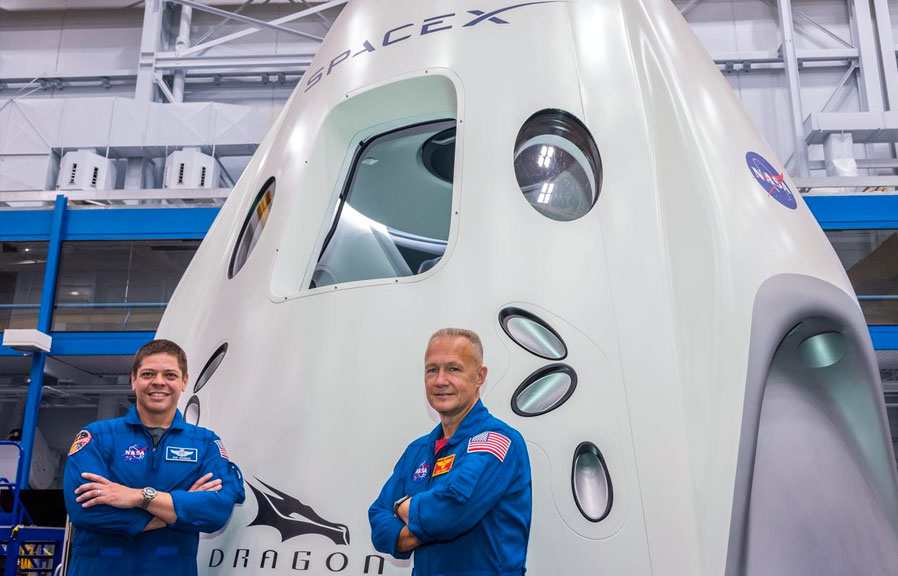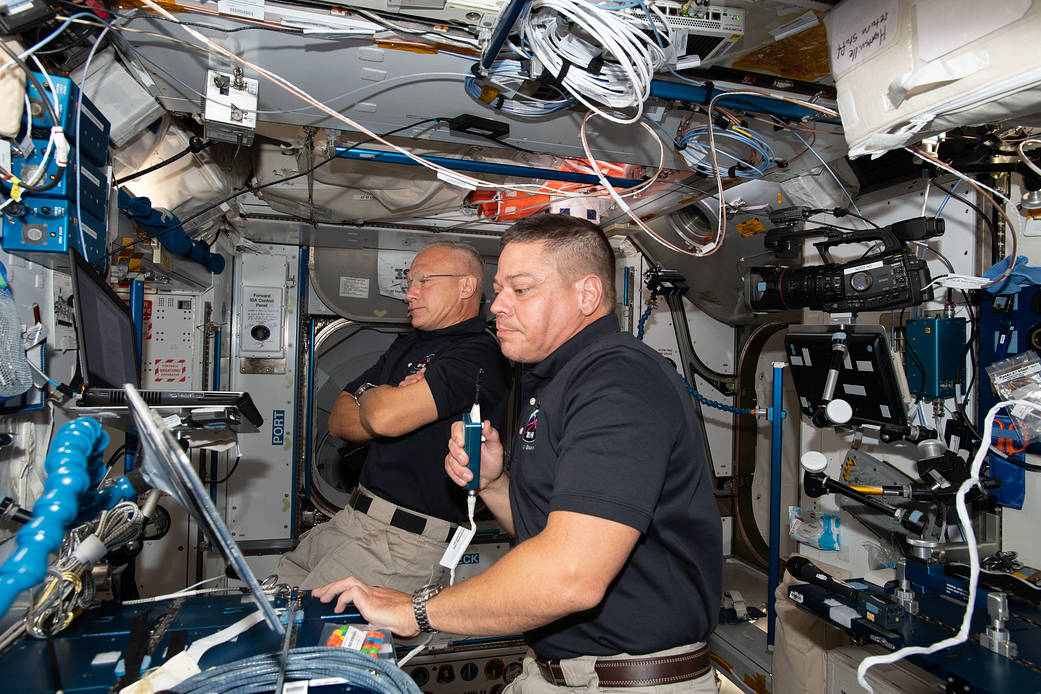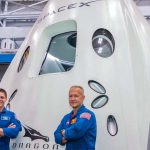NASA Astronauts say riding SpaceX’s Falcon 9 rocket was smoother than the space shuttle; ‘very pure flying machine’

For the first time in nearly a decade, Space X made history to become the first private company to launch NASA astronauts into space from American soil. SpaceX safely launched NASA astronauts Bob Behnken and Doug Hurley to space on board the SpaceX Dragon spacecraft on May 30, 2020 after the weather forced NASA to scrub launch on May 27.
After a 19-hour flight, the spacecraft went above the border between China and Mongolia, in a race against time as orbital night approached. In what NASA personnel called an epic moment in history, the capsule finally completed docking at 1416 GMT.
Having being on two previous space shuttle missions, the two astronauts were surprised about how smooth the SpaceX launch was. Hurley and Behnken said the SpaceX’s Falcon 9 rocket was a “very pure flying machine” as it sped their Crew Dragon spaceship into orbit. However, they did not anticipate the rougher-than-expected ride on the Falcon 9’s powerful upper stage.
“We were surprised a little bit at how smooth things were off the pad. The space shuttle was a pretty rough ride heading into orbit with the solid rocket boosters,” Behnken said.
When asked about what it feels like to ride on Falcon 9, Doug Hurley, said:
It never gets old talking about riding on Falcon 9. From the time the engines lit, the first two and a half minutes to staging was about like we expected, except you can never simulate the Gs, so as the Gs built you could certainly feel those. Also, what I thought was really neat was how sensitive we were to the throttling of the Merlin engines. That was really neat. You could definitely sense that as we went transonic and broke Mach 1 we could definitely feel that. In fact I said it to Bob and then the next thing you know the call was made, and we didn’t even need to look at the speed. You could tell just by how the rocket felt. It’s a very pure flying machine.
Doug Hurley added:
The next thing that really stood out for me was first stage separation with the engine cutoff and that separation event. Going to zero G for split second and then the Merlin vacuum engine lighting. That was a pretty neat event. That was a highlight of the ascent for me. And then once the M-vac started, then it was that kind of driving fast, very fast, on a gravel road, is how it felt the rest of the way up. A little bit of vibrations, not anything that was really unpleasant, but you certainly knew that there was a powerful engine behind you at the time, and that obviously took us all the way to orbit about six minutes later. And one again the Gs and how the engine throttled to control the Gs and then straight to cut off, and then just like with Shuttle, you go from three, actually in this case we were more than three Gs, to zero Gs instantaneously, and we knew we made it to orbit.
Behnken and Hurley, the first astronauts to fly to SpaceX’s Crew Dragon to the station, docked to the space station’s Harmony module at 10:16 a.m. EDT on Sunday, May 31, 2020. The two astronauts were welcomed as crew members of Expedition 63 by fellow NASA astronaut Chris Cassidy and two Russian cosmonauts Anatoly Ivanishin and Ivan Vagner.
The docking followed the first successful launch of Crew Dragon with astronauts on a SpaceX Falcon 9 rocket at 3:22 p.m. EDT Saturday from Launch Complex 39A at NASA’s Kennedy Space in Florida, the same launch pad used for the Apollo 11 Moon landing mission.
After reaching orbit, Behnken and Hurley named their Crew Dragon spacecraft “Endeavour” as a tribute to the first space shuttle each astronaut had flown aboard. Endeavour also flew the penultimate mission of the Space Shuttle Program, launching in May 2011 from the same pad.

iss063e022389 (June 1, 2020) — NASA astronauts Bob Behnken (foreground) and Doug Hurley, who flew the Crew Dragon spacecraft to the International Space Station during SpaceX Demonstration Mission-2, are pictured briefing mission controllers about their experience in the new vehicle. (Source:NASA)

